Blog 8
20th – 22nd April
Aralsk to Akespe
Distance: 141km
Total Distance: 1981km
Aralsk is the only major town in the region, developed as the northern port on the Aral Sea. It was connected to the southern port of Moynaq, about 500km across the former sea, in Karakalpakstan (a part of Uzbekistan). In Soviet times, Aralsk’s port facility is where boats were unloaded with goods, such as cotton grown in Uzbekistan (produced using water from the Amu Darya), and exported rice (grown using water from the Syr Darya) and tens of thousands of tonnes of fish, processed in the city’s fish processing factory to all over the Soviet Union. Aralsk was an important cog that kept the Soviet Union running self-sufficiently.
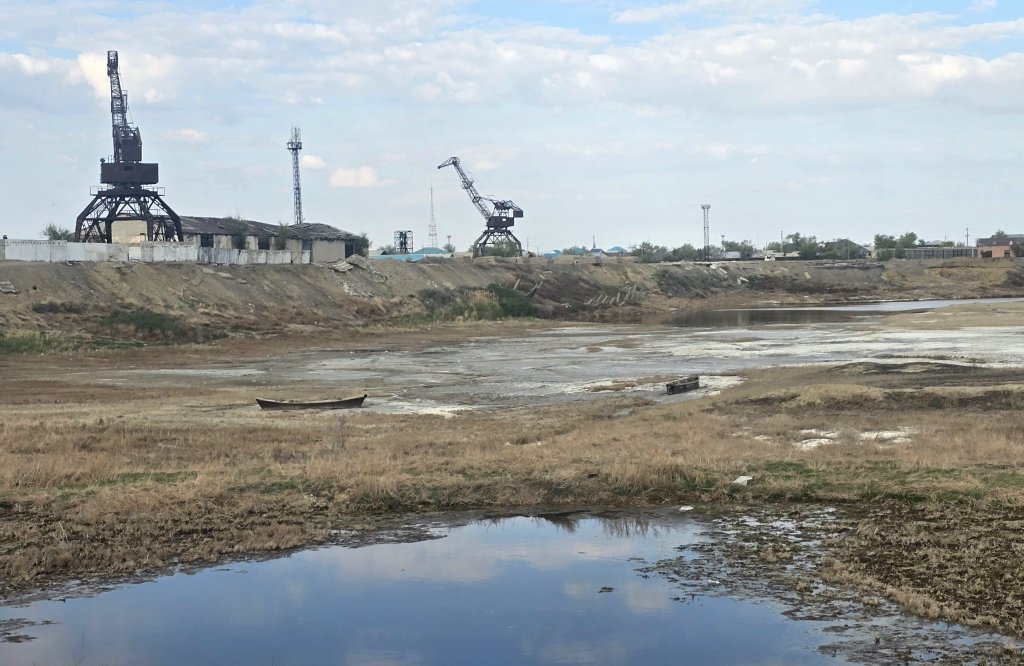
The fishermen worked strategically – a large “mother ship” would be positioned in a central location, away from the coast, and a fleet of smaller fishing vessels would deposit their catches on the bigger ship. The fleet would move to different locations so not to overfish one area. There were several fish processing and storage factories around the Aral Sea.
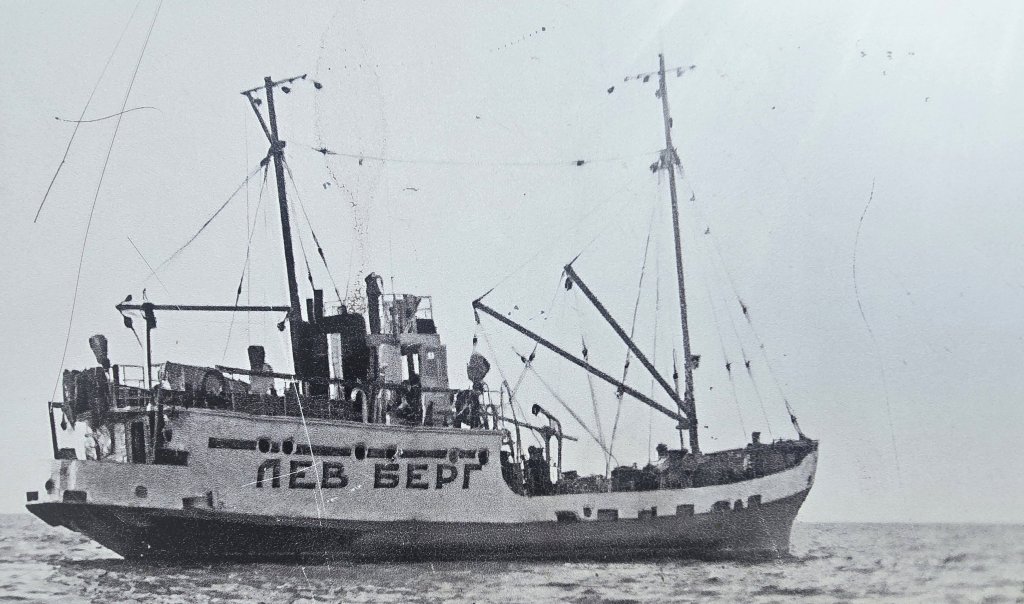
Water disappeared from Aralsk’s port in 1975. This is when the fishing industry ceased in the port city. There was also a boat building and repair factory in Aralsk that kept the economy moving once the water was gone. Here, boats were left stranded high and dry, rusting in the bay and around the coastline. These ghostly structures have since been removed and sold as scrap metal to the Chinese.
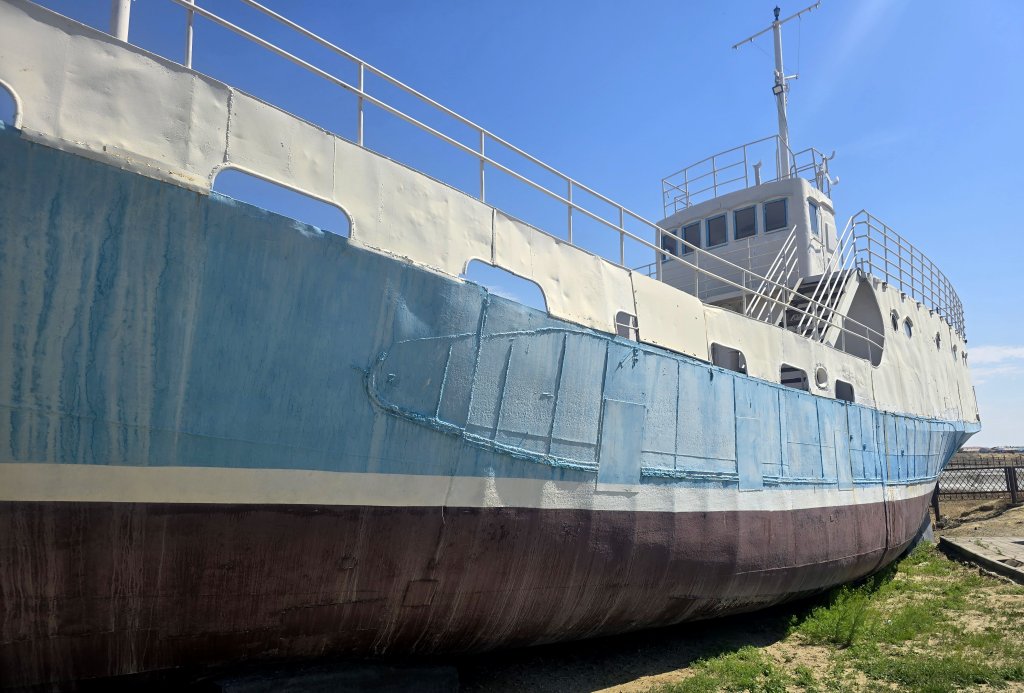
Our two-day pit stop in Aralsk was an opportunity to learn about this history with thanks to Akmaral and Fariza, locals who have had much involvement in positive activities aimed at preserving and innovating to help the region to adapt and keep the economy going. In the process of being launched is the Aral Sea GeoPark, a plan to promote the region and make it more accessible for tourism. By getting acceptance as a UNESCO GeoPark it is hoped to increase awareness about the plight of the Aral Sea and attract significant funding to develop the economy.
As the water retreated 50 years ago, there are few people left who remember what it was like when water filled the harbour, then a hive of industry. I asked Akmaral whether there was anyone we could meet who remembered Aralsk when the bay was filled with water. It wasn’t easy but she eventually connected with Zhilkibal. Now 86 years old and frail, Zhilkibal began life as a fisherman at the age of 15, working with nets in small wooden boats. He explained his rise through the Soviet ranks, gaining experience fishing and working hard around the Aral Sea, Soviet Union and internationally. At the height of his career, he ran the Aralsk fish processing factory. Zhilkibal was highly awarded and pulled out his collection of medals and honours. He has been a respected leader in the industry for decades. When I asked where he thinks the future lies for the Aral and will the water ever come back, he wasn’t too hopeful. He felt very frustrated at the present situation.
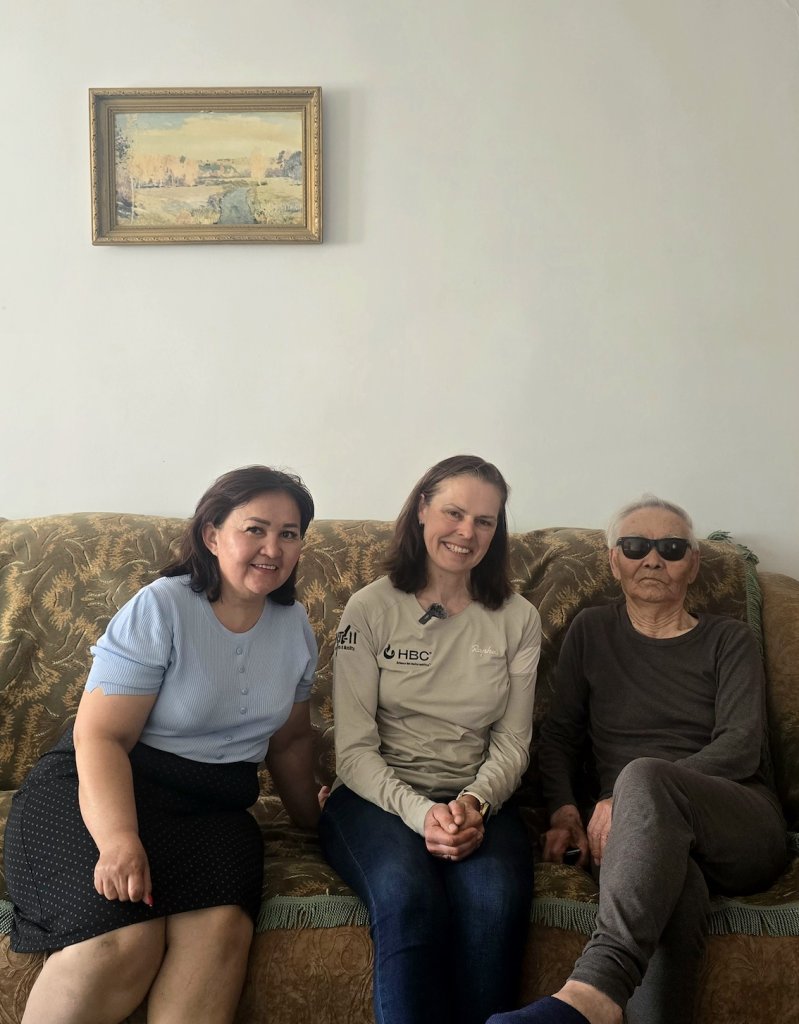
Aralsk has been through very hard times. The Soviet leadership wanted to relocate the people to start a new life far away in other cities, but they refused to move. There is a soul here. The locals want to stay and make it work. The building of the Kokaral Dam in 2005 has helped to raise the water level (even though water is a long way from the town) and with it, people’s hopes. It has reduced water salinity and created a conducive environment for fish again. A partnership with a Danish organisation to successfully introduce a new saltwater species, flounder has worked. Akmaral has been involved in this, as has Zhilkibal. Now, the Geopark is an example of a really positive initiative.
Atyngul, one of Akmaral’s secondary students joined us as we toured the outdoor museum on the waterfront, keen to practice her English. I asked whether, when she finishes school, she intends to stay in Aralsk. She thought not, at least in the shorter term – she wants to go to university in Almaty. When asked what is her biggest hope, she replied, “for the water to come back”. Plans for phase two of the Kokaral Dam, that would raise the water level to a total of 48 metres (pre-Kokaral Dam level), but this has been on the table for a decade. Let’s hope Atyngul gets to see water in the bay.
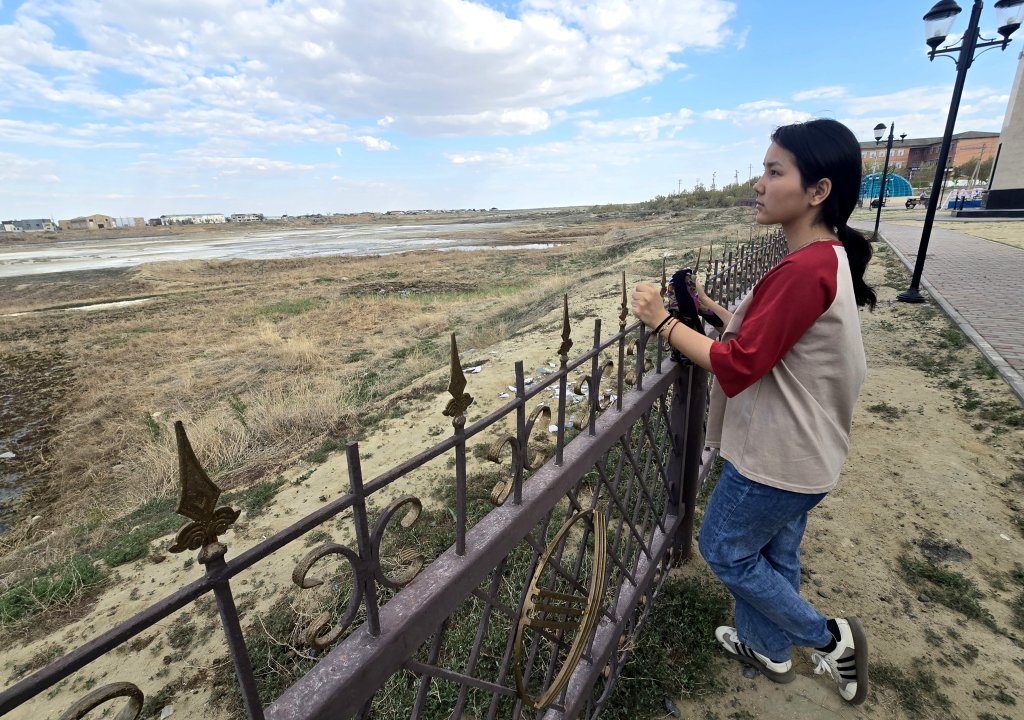
Day 29
Aralsk to Tastubek
81km
Fariza joined the team for the next two days as our interpreter. The aim for the first half of the day was to reach the fishing village of Zalanash to meet another professional fisherman. I chose to take the little used route over the seabed rather than the much longer usual road away from the sea. The area has a network of tiny tracks through the low bushes and unfortunately, sand. I really struggled for a few kilometres until we were clear of the sand and on to dusty clay.
During the break Sasha worked on the broken all-wheel drive (AWD) system – he did a great job – it is not the same and to engage the system I must stop to manually adjust a lever, but it is a help when the sand becomes really soft. A few kilometres from Zalanash I hit the old beach and struggled over the pure white sand (cycling at all was possible thanks to the AWD system).
The fisherman we had come to meet, Zhalgasbai Izbasarov and his wife were very hospitable and we spoke about life in Zalanash and the challenges they face. In Soviet times, there were actually three collective fishing operations, but as the fishing industry became under pressure, some people left and eventually the three communities became one – Zalanash. He and other fisherman temporarily relocated to Lake Balkash in eastern Kazakhstan for work. Zhalgasbai was active with the Danish fishing project and travelled internationally. Zhalgasbai was worried what will happen to the Aral Sea in the future. In recent years the Syr Darya hasn’t delivered enough water to maintain the current level. He said there was one proposal to divert water from another river in Kazakhstan to compensate.
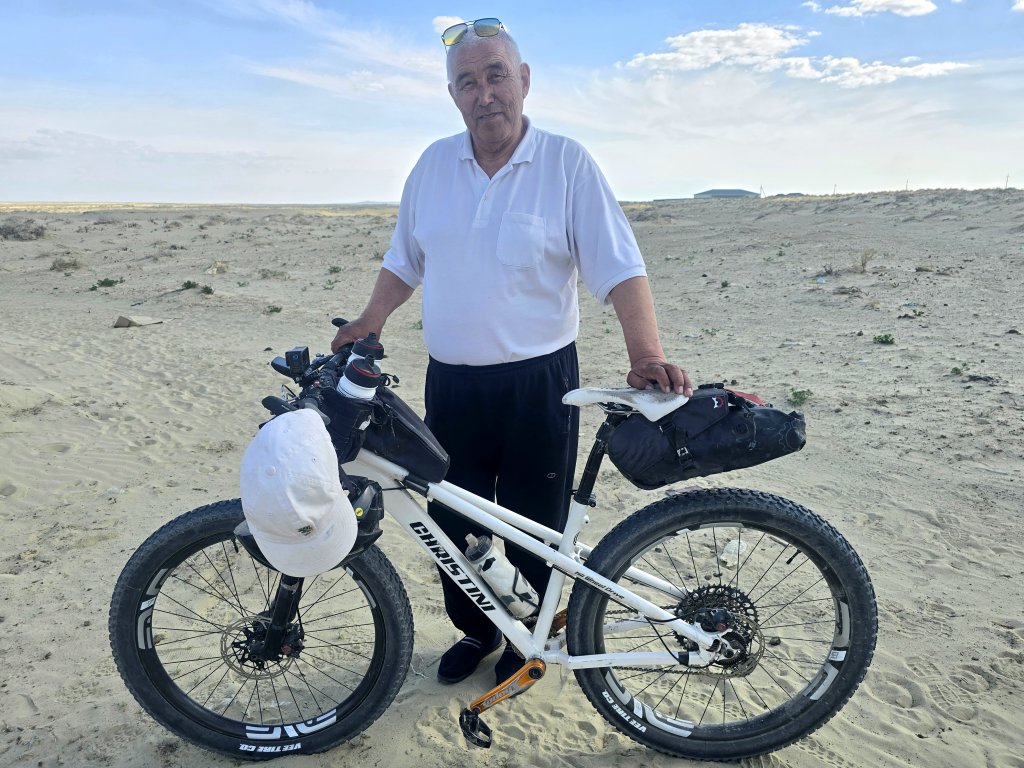
Before leaving, I asked if he could show us the old shoreline when he was growing up – at the end of the main street. Now the water is 23km away.
The ride to Tastubek was much tougher than I expected because we chose another shortcut which ended up tracking the electricity line through rough dried mud.
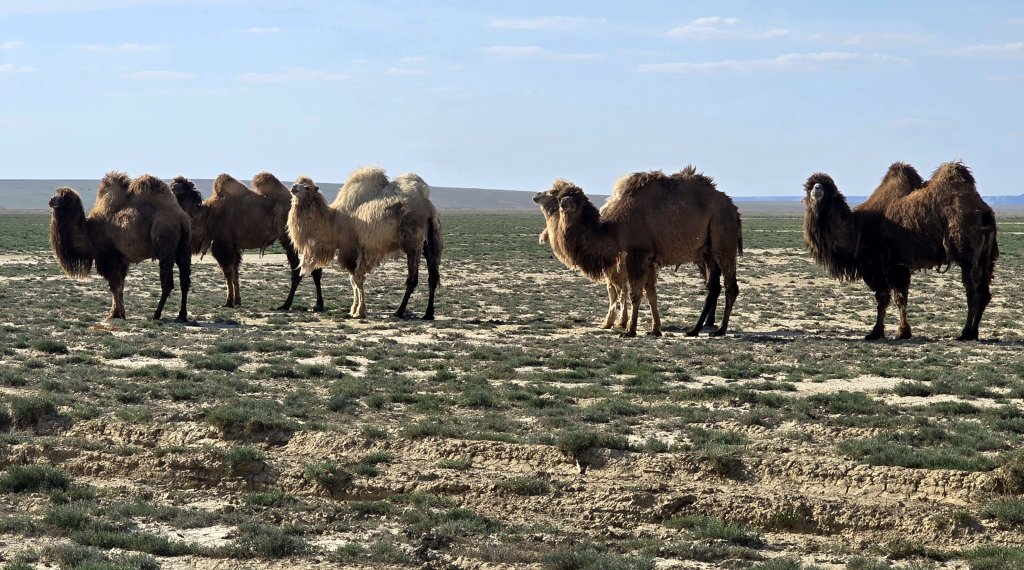
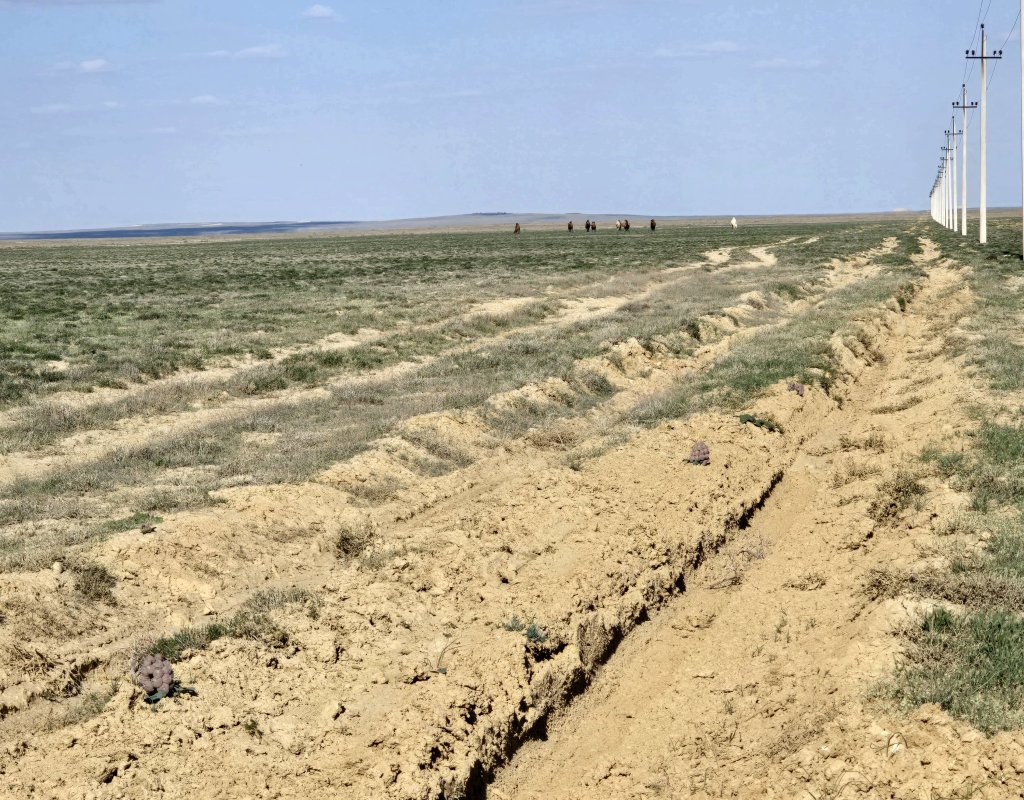
Arriving just before sunset, our hosts Omirserik and wife, Ainagul were ready. Omirserik invited Georgia and I to join him putting out the nets. Similar to Zalanash, the water used to be right on the edge of the village, but now they have to drive 3km over the former seabed. Even over the last two years, the water has receded about 150m.
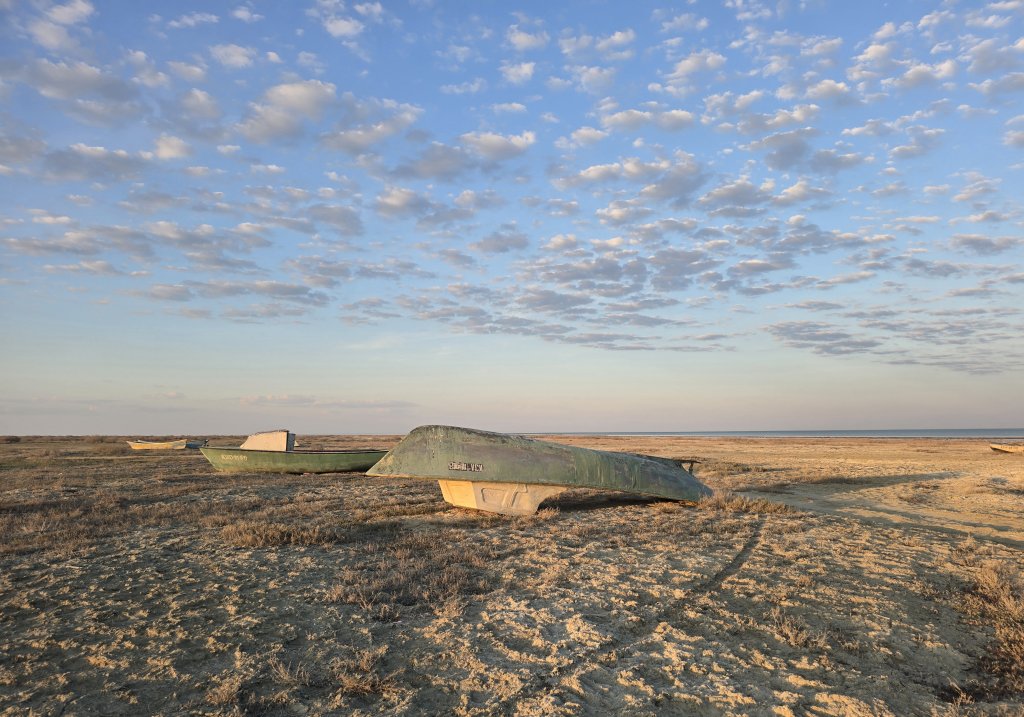
It was amazing to be out in Omirserik’s boat to help him drop a fishing net at sunset on a calm day. I actually had to row – just what I needed after a very physical day – while Omirserik distributed the net from the front of the dinghy.
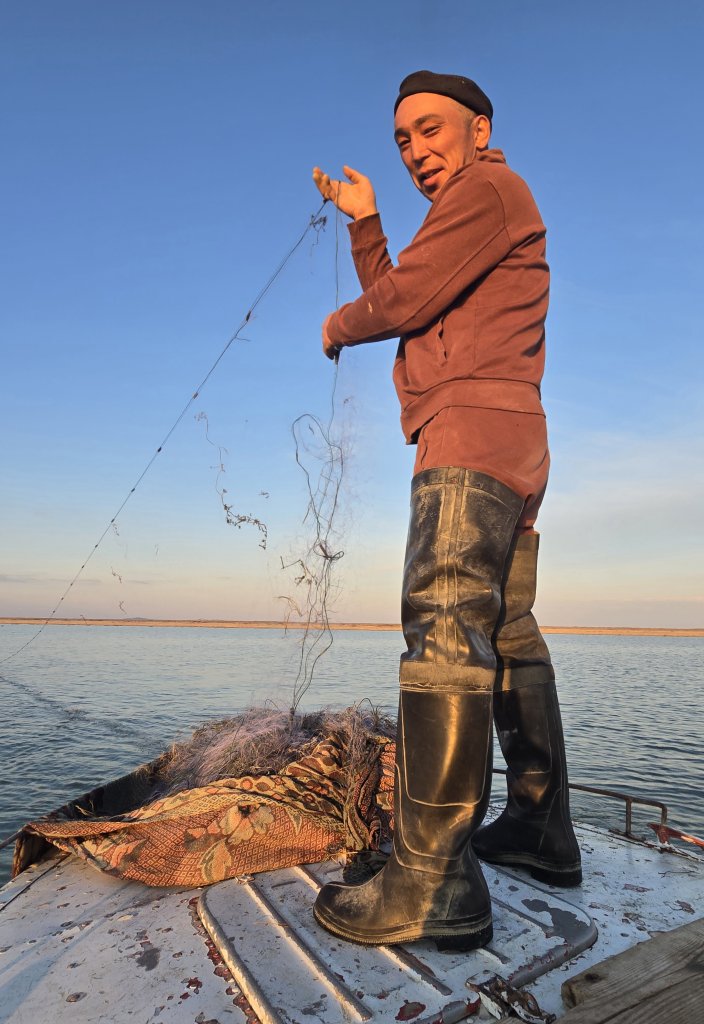
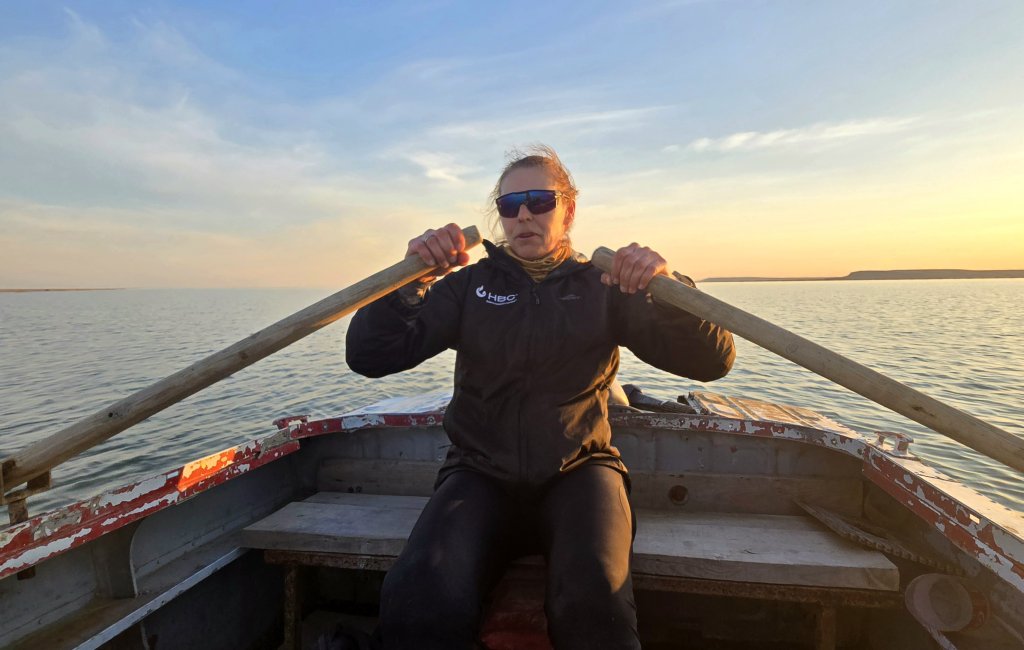
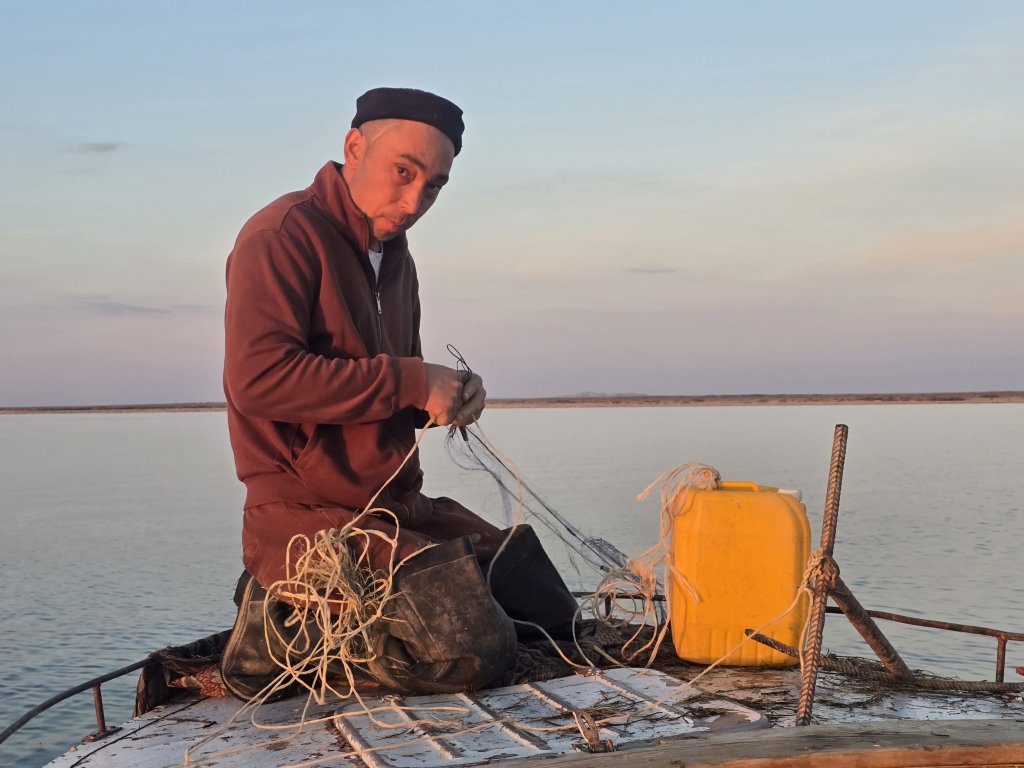
On our return to their home we were treated to fresh fried fish caught early that morning. The village would have been very isolated in years gone by with no electricity or running water. They still have to have their water delivered by truck, though Omirserik said that is changing soon. They seem a happy, hardworking family with two young boys. Omirserik was adamant he didn’t want his sons to be fisherman preferring they go to university to avoid his hardworking life. His father wanted the same for him, but of course, Omirserik did choose to be a fisherman.
We slept on the floor, as we often did, having really enjoyed their company. But sleep was short as we needed to rise at 4.45am to go with Omirserik and his fishing partner out to collect the day’s catch. The catch was about 25 fish – a type of perch. Omirserik dropped us at the shore and went out again to collect fish his other nets, then later that morning traders would come to the shore and they would sell their day’s catch.
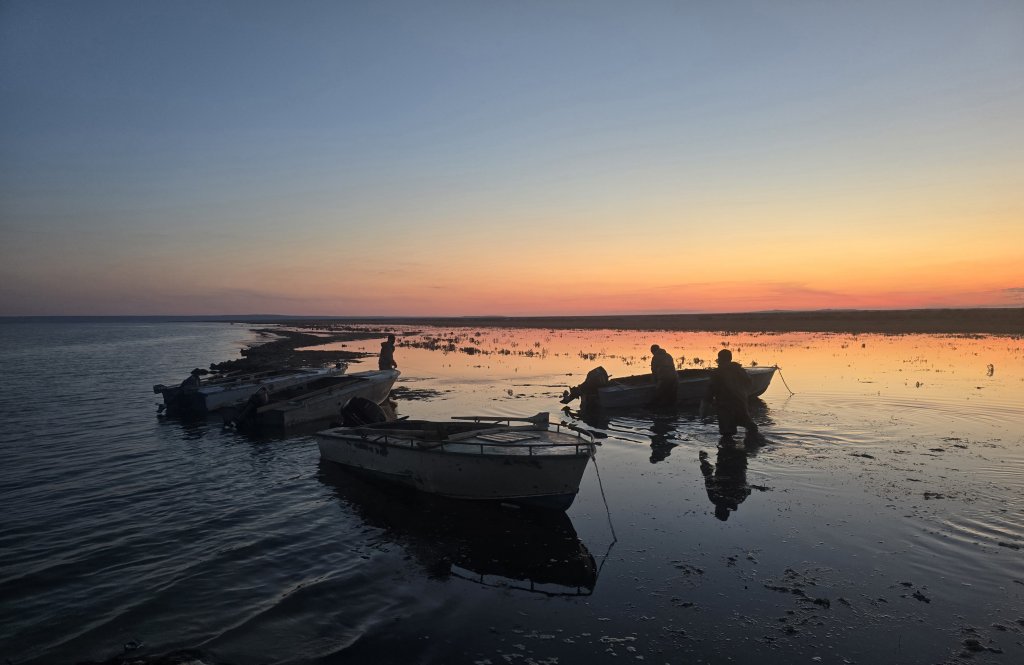
Only 100 fisherman with 50 boats have permits to work in their region to ensure stocks aren’t compromised.
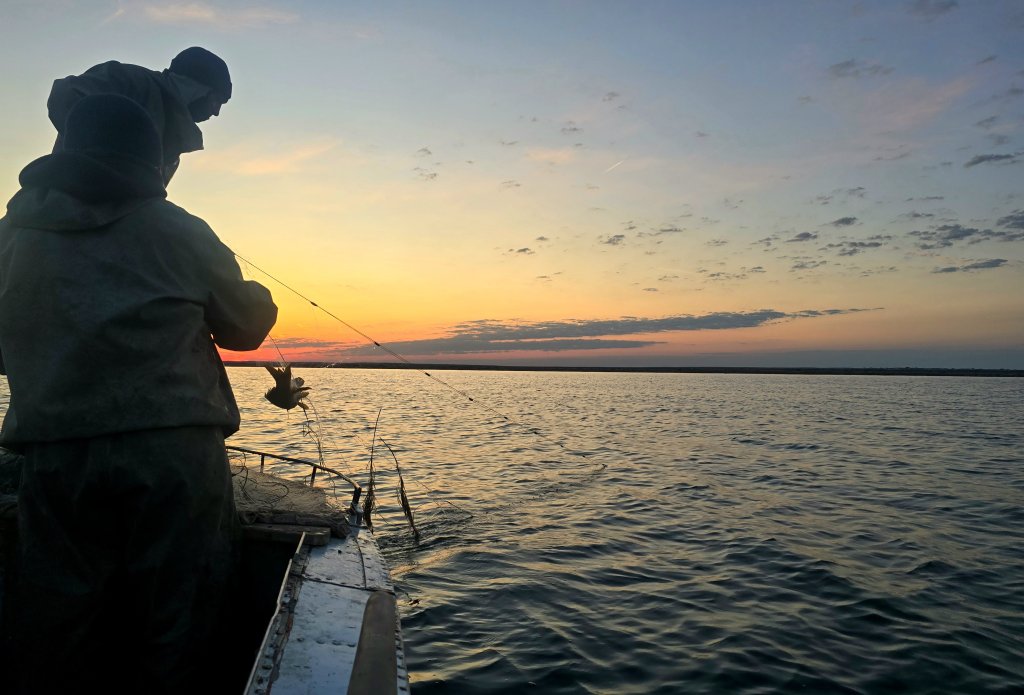
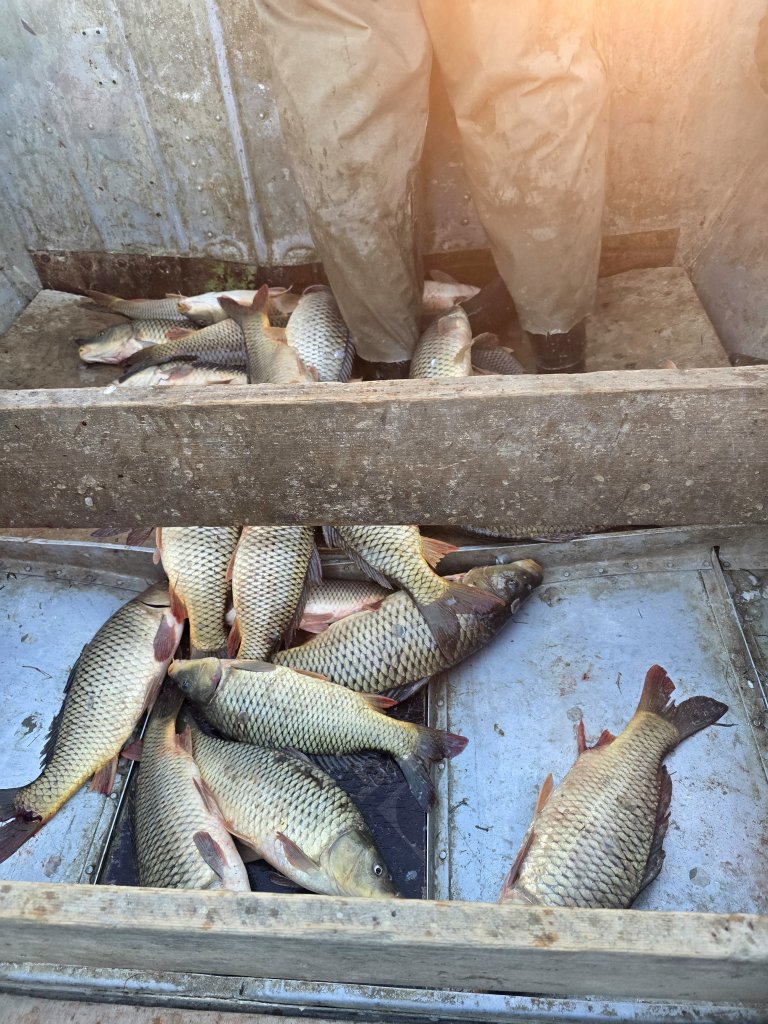
Tastubek to Akespe
60km
The ride around Butakhov Bay, the most northern section of Aral Sea North, was stunning. The massive Ustyurt Plateau spectacularly crumbles to the sea with all sorts of colours and weathering formations. My route was along the flat at the base of the Butakhov cliffs.
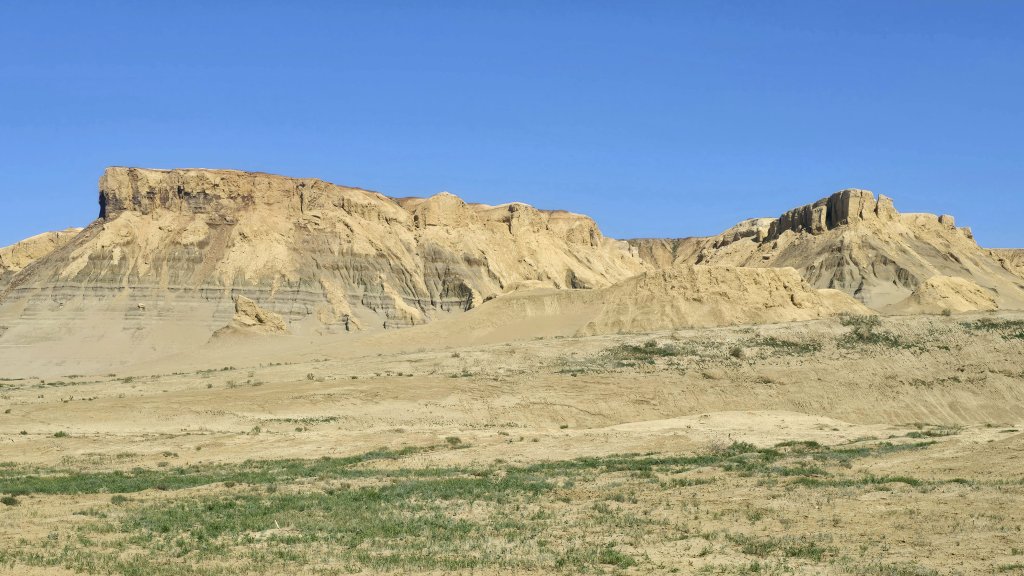
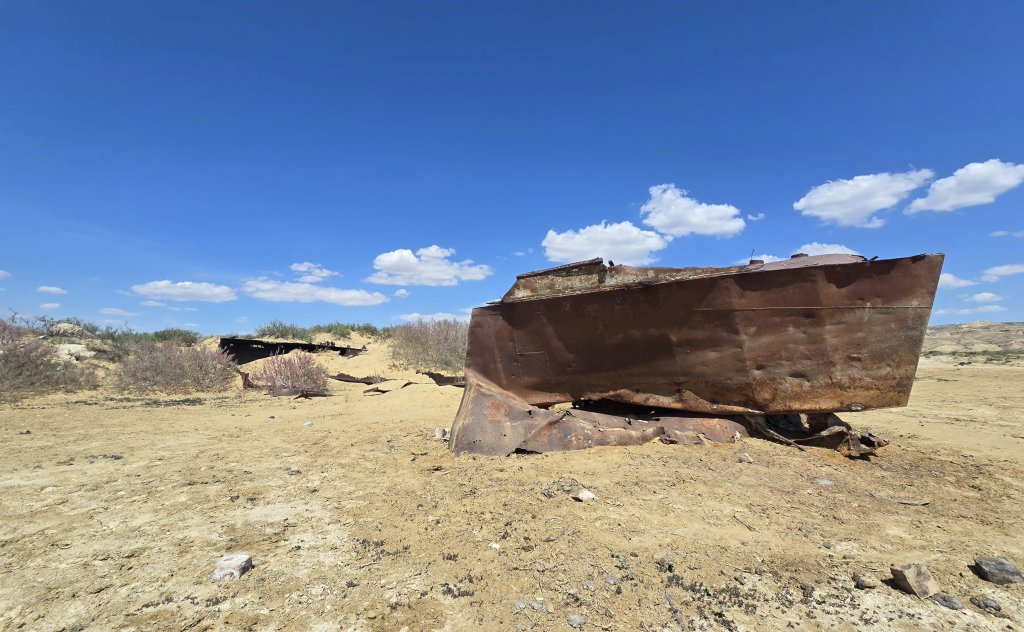
Just before Akespe, there was a thermal spring releasing water at 62 degrees C. I have no idea how she were able to withstand cooking in that heat. Akespe, also once a fishing village, however the old village was overwhelmed with sand to the point that the government built an entirely new village further away from the sea and sand.
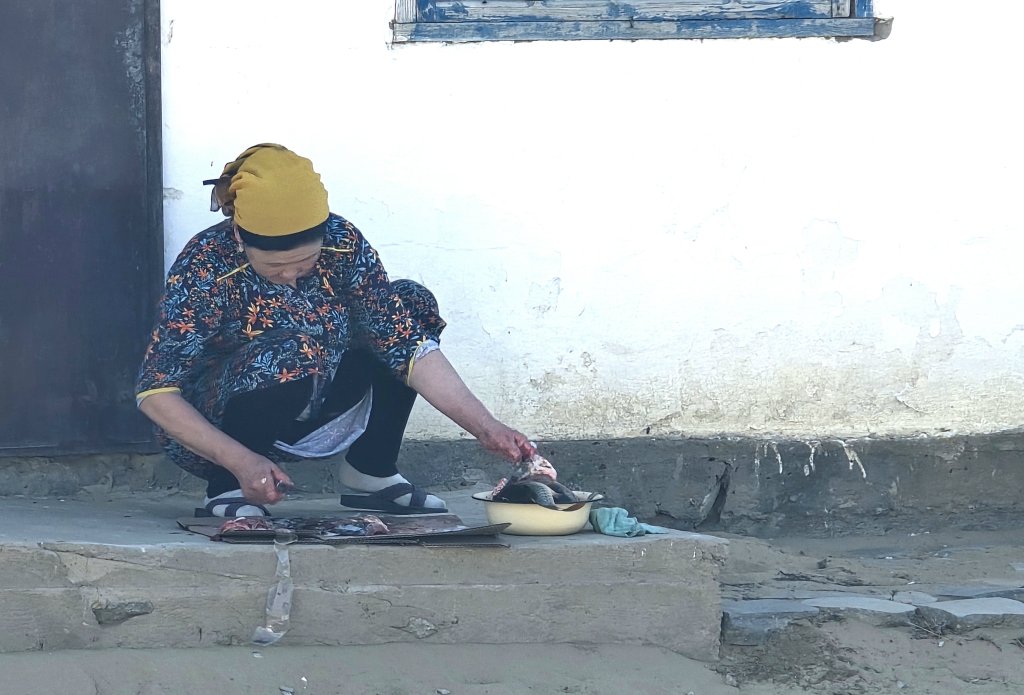
Here, Fariza helped us find accommodation before a colleague drove out to collect and take her back to Aralsk
FOLLOW THE JOURNEY
Thanks to ZeroSixZero, you can open this URL on your phone and select “add to home screen” and the map will become and app. You can then keep updated in real time: https://z6z.co/breakingthecycle/central-asia
TAKE ACTION
Support my Water.org fundraiser to help bring safe drinking water and sanitation to the world: Just $5 (USD) provides someone with safe drinking water or access to sanitation, and every $5 donated to my fundraiser will enter the donor into the Breaking the Cycle Prize Draw. https://give.water.org/f/breakingthecycle/#
EDUCATION
An education programme in partnership with Exploring by the Seat of Your Pants, with contributions from The Royal Geographical Society and The Duke of Edinburgh’s International Award Australia. We have created a Story Map resource to anchor the programme where presentations and updates will be added as we go.









Really impressive so far, Kate. Not only for achieving your cycling distance each day across challenging terrain, but also for taking the time to understand what you’re seeing and to share with us the very real impacts of climate change. Super interesting. Go well.
Hi Kate. This is a fascinating read. The fate of Aral Sea is such a glaring example of environmental mismanagement, not to mention the resulting awful conditions that the people living and working on and around it have had to endure in the decades since the water disappeared. Let’s hope the schemes you have been describing continue to make a positive change.